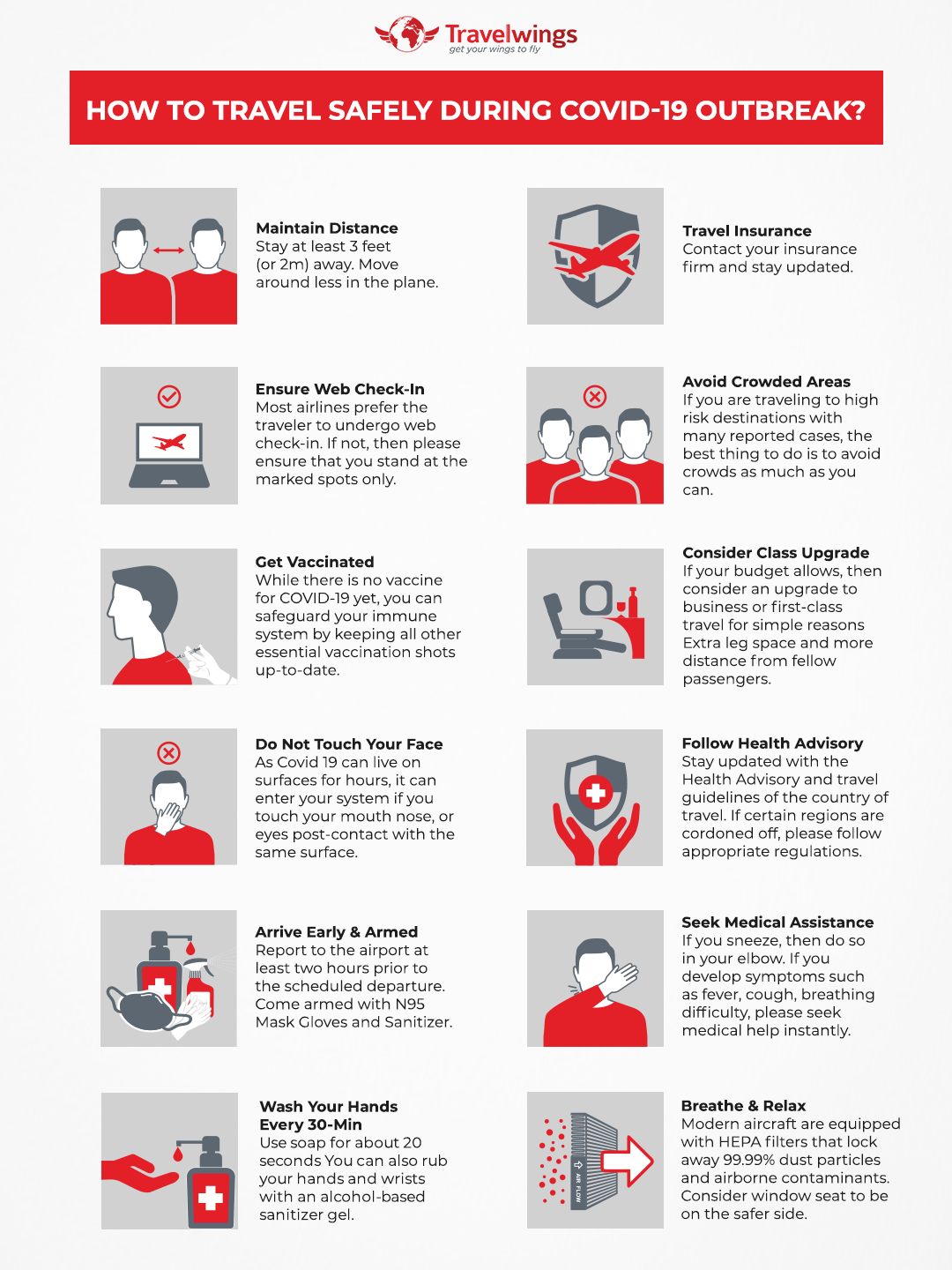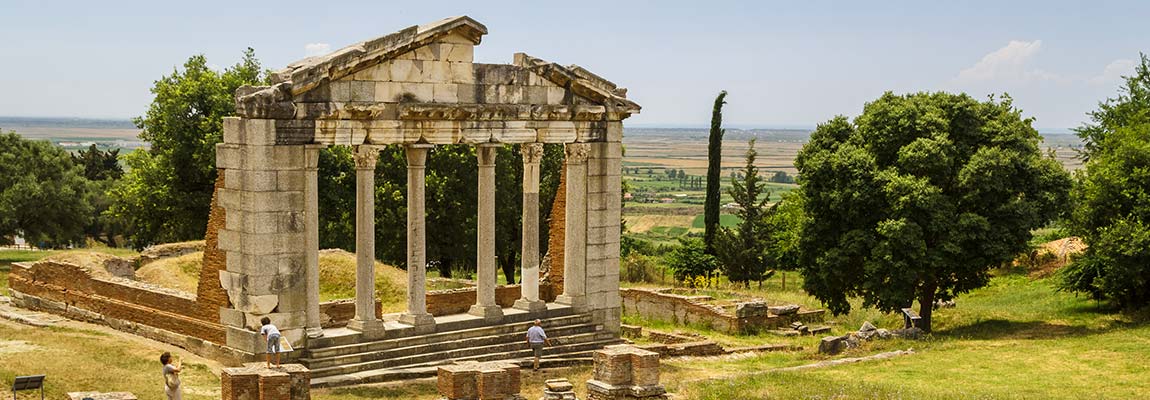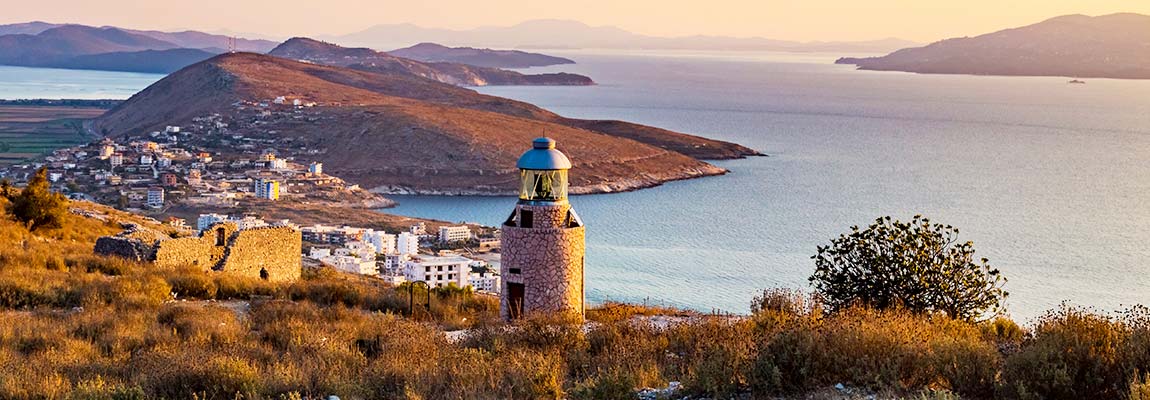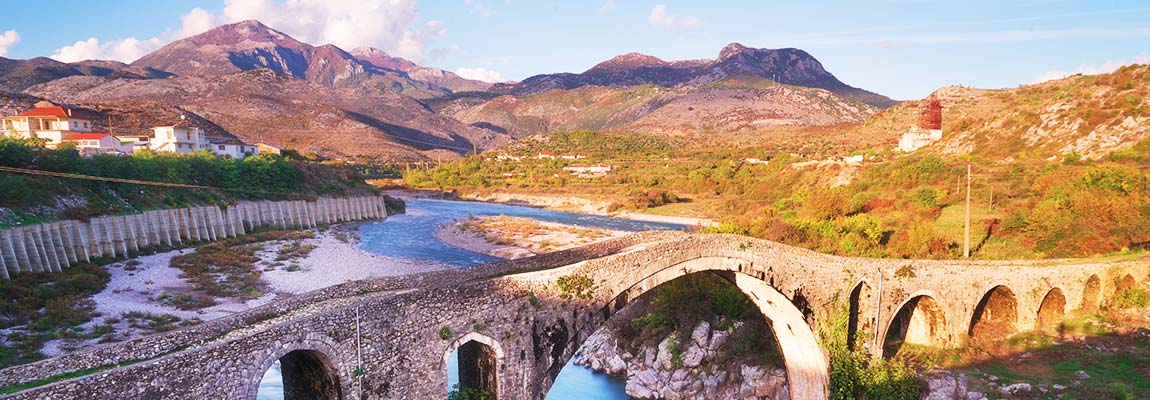






Albania lies in the Southeastern part of Europe. It is bordered by Montenegro to the Northwest, North Macedonia to the east, Kosovo to the Northeast and Greece to the south. The country also has a coastline with the Adriatic and the Ionian Sea located within the Mediterranean Sea. The people of Albania refer to themselves as 'Shqiptare' which means 'sons of eagles'. But, translates to âthose associated with the shqip (Albanian) languageâ. The country has seen a lot of repression by individuals and countries alike. But it still manages to awe the people who visit this country.
Famous For: Skanderbeg Square | National History Museum | Grand Park of Tirana | Pyramid of Tirana | Kulla-e-Sahatit | Berat Castle | Muzeum Ikon Onufrego | Ethnographic Museum | Gorica Bridge | Lead Mosque Berat | Bulevardi Republika | Byrek | Tave Kosi | Raki
Time Zone: UTC+1 (CET) and in Summers (DST) UTC+2 (CEST)
Driving Side: Right
Airports in Albania: Tirana International Airport (TIA) | Kukes International Airport (KFZ) | Vlore International Airport
Network ConnectivityNetwork connectivity is pretty good in Albania, but if you plan to visit Albania, here is a piece of advice. Kindly procure a local Albanian SIM card with international bundles, which will be much cheaper. The international roaming charges in Albania might cost you a bomb on your home network. A lot of money can be saved by only investing up to $5 in a good local SIM card.
Telecom giants like Vodafone, One Telecommunications and ALBtelecom have shops inside the airport, from where you can get one of these SIM cards with local rates and bundles. You can get a bundle of 50 MB, valid for 30 days for a mere $4.96. If you need to top up on data or international calling minutes. It would be an additional top-up of $ 4.96 for 20 minutes of international calling and $ 9.91 for 3 GB of data. But, the majority of the places and hotels offer Wi-fi facilities.

Albania has had a very eventful history under the hands of a few too many dictators and its weird obsession with power-hungry dictators. Around 2000 B.C, Albania was inhabited by people called the Illyrians. The Illyrians did not represent a united front and were a rather mysterious bunch. However, even with all the secrecy, the Greeks and the Romans considered the Illyrians to be barbarians.
In 168 B.C, Queen Teuta of Illyria sanctioned pirate raids into neighbouring countries. The act of defiance was not well received by the Romans and they invaded and took over Illyria. The war was extremely long and brutal but finally worked in favour of the Romans. Under Roman rule, the country of Illyria became Illyricum and was much more well behaved than from their previous image. As a result, many Illyrians went on to become Roman emperors like Aurelian and Constantine.
From then several rulers invaded and ruled over different parts of the country, resulting in several feudal lords and their wars. But all this came to an end at the end of the 14th century when the Ottoman Turks invaded the country and Albania got its first warrior in the form of Skanderbeg. Skanderbeg was a commander and military genius, who halted the progression of the Ottoman army to the western part of Europe while uniting the divided groups of Albanians.
For 2 years Skanderbeg was able to keep the Ottoman incursion in check, but after his death, the Ottoman finally took over Albania. Under the Ottoman rule the majority of the country was converted to Islam and like the rest of the Ottoman-ruled countries were barred from practising anything related to the western world. The country was kept in medieval times when the rest of the world was progressing further in the field of science and technology.
In the late 19th century, the feverish Nationalism that swept Europe reached Albania and the revolts against the Turks gained momentum. Finally, on the 28th of November 1912, the Albanian people led by Ismail Qemali declared independence. But if somebody could just tell the people of Albania that the worst was yet to come. During World War I, Albania transformed into a battlefield and in the coming years witnessed a lot of turmoil and political instability.
Post that in 1928, King Zog aka Ahmet Zogu took the reins of the country and introduced several reforms, banned the Sharia law and became an ally of Italy. However, Albania’s economic dependency on Italy made a general named, Mosellini, get a new insight into the matter. And, in 1939 the world witnessed Mosellini invade Albania and take control of the country, to run the show the way Italians would.
Two years later, the Albanian Communist Party (ACP) was formed and was led by a school teacher named Enver Hoxha. Post a violent civil war, the ACP gained control and Enver Hoxha was now at the helm of the country. And after that started a massive purge by the communist's party of all the suspected enemies. The wealthy people of Albania had their money and property confiscated and economic infrastructure was announced as property of the state.
Albania under the ACP regime became an ally of the USSR and Stalin, who provided massive economic and monetary aid to Albania till he was alive. After Stalin’s death, the new leader wanted to de-Stalinize the earlier set reforms, which was not welcomed by Albania. Instead of changing their old ways, Albania partnered with China under Mao. In 1967, the ACP declared Albania to be an atheist state, but China and the US growing their bond of friendship. Albania broke its tie with China. Finally, in 1990, the ACP lost power and the new democratic government to this day has made massive efforts to revive Albania to its former glory.
Albania is located in the South Balkan region, bordered by Greece to the south, Macedonia to the east, Kosovo to the Northeast and Montenegro to the North. And to the northwest shores, with the Adriatic Sea and to the South West with the Ionian Sea. There are hardly any islands from the coast of Albania, but there is the Sazan island that holds deep importance in the history of Albania.
70% of the country is covered with mountains, with 25% of the land being employed for agricultural purposes. It is also the sector that employs 47.8% of the country’s population. Albanians also are very fond of growing their tobacco, which is another sector where a massive population is employed. Albania also has several other kinds of landscapes like green hills, lush and dense forests and very warm temperate beaches along its coast.
Beaches like Ksamil and Durres are very popular with tourists and locals alike. Another interesting geographic or rather architectural feature that one would find in Albania are mini-war bunkers. These were built by the leader of the communist party Enver Hoxha for military preparation for any future war. In recent times, these bunkers have been transformed into an art gallery, a shop and even someone’s home.
Albanian history of arts and music is culturally rich and diverse with various forms of both being handed down from generation to generation. In terms of art, Albanians are known for their skills in lace making, wooden carvings and furniture making. These skills have evolved and portray the essence of the influence of Christianity and Islam that once were prevalent in the country.
Storytelling is another form of art that has taken deep roots in Albanian arts and music culture. Storytellers are known to remember lines from the original story in the form of verses that are more than 100-1000 lines long. The song sung stories speak of the strength and valour of the Albanian ancestor and heroes like Skanderbeg. However, this tradition seems to be on the verge of extinction, for a very few Albanians have opted to revive the ancient Balkan art form.
Albanian folk music has the characteristic of the Balkan region, with slight influences from Turkey and the Persian arrival in the country. Singing by men in a group or choir represents the influence of Byzantine church music. In 2005, Albanian iso-polyphony was listed as an outstanding example of the world’s intangible cultural heritage by UNESCO. This folk tradition is still in practice in Albania and can be seen being performed at weddings, festivals and other social events.
Food and DrinkAlbania is called the land of fresh food and there is a good reason behind that. All over Albania, a very old, yet practical style of cooking is practised across households, from restaurants to cafe’s, to roadside eateries. The practice is known as ‘slow food’, which witnesses the food being brought fresh from the farm. And cooked to perfection without any kind of storage taking place. They firmly believe that through this method, the freshness and the flavours of the food are preserved and enhanced respectively.
Albanian gastronomy has gained worldwide recognition and is often taken up in several food competitions that happen across the world. The Albanian welcome includes a generous offering of bread, an assortment of cheese and Raki by the host. This tradition is still prevalent in Albania, and if you are invited to a local Albanian household, be certain of expecting this entree setup upon arrival. Raki is a local distilled alcoholic beverage that aids in healthy digestion.
Must-Try Albanian DishesByrek (salted pie pastry stuffed with spinach or cheese or meat) | Fergese ( is a paste made of cooked bell peppers, tomato and cottage cheese) | Tave Kosi (a quiche-like dish made of lamb, eggs and yoghurt)| Speca me Gjize (Baked dish made with bell peppers stuffed with rice, cottage cheese and spices) | Fried Kackavall (fried blocks of a yellow salty cheese) | Qofte (grilled seasoned meatballs) | Zgara (barbeque meat) | Perime ne Zgare (slices of grilled assorted veggies) | Trilece (cake made with milk, cream and concentrated milk)
Must-Try Albanian DrinksRaki (distilled grape juice) | Tirana (local blond beer) | Korca (local lager beer | Coffee | Local Wine | Boze (corn, wheat, sugar and water mixture) | Dhalle (Albania styled thick Buttermilk)
HospitalityHospitality thrives within every Albanian as part of the teachings imbued by their parents and traditions. It is a basic tradition of Albanian society to serve food to the guest or visitor of their homeland. It is very common in Albania for guests to be invited to eat and drink with the locals in their house. Albanian hospitality knows no bounds and it is represented in its warm and welcoming nature.
Albania has a climate pattern that is nothing short of a concoction. The western parts of the country showcase a slightly warmer climate as it is closer to the ocean. On the other hand, the eastern and the Northern parts of the country portray a much colder climate with mild summers and chilly winters, owing to the higher altitude. The country is divided into 4 sub-sections when it comes to the weather.
We have the northwestern and northeastern highlands, the Eastern Highlands, the southern lowlands and the western plains. The country experiences dry summer and wet winter, with the majority of the precipitation happening during the winter months. The temperature ranges from a pleasant 20°C to 24°C in summers to a bone-chilling -29°C in winters but again depending on the region.
The only location in the entire country that has more significance than any other historical site. Skanderbeg Square is the most important location for the people of Albania. The location marks a memorial site for one of the greatest Albanian warriors, Skanderberg. Do you ask how great was Skanderbeg? Well, to start he was considered the greatest commander and military genius the country ever created. He managed to stop the advance of the Ottoman Empire when the empire was at its prime and he was still new in the game.
Best Time to Visit: April to October
Entry Price: N/A
Also called the 'Park on the artificial lake', is a public park spread across 289 hectares of land surrounded by a man-made lake. The park is home to the Presidential Palace, Saint Procopius Church, a Zoo and a botanical garden. The garden is considered the most peaceful place to be in the early mornings. Even with the background of a cityscape, it attracts both tourists and locals alike.
Best Time to Visit: April to October
Entry Price: N/A
The location is one of the most popular destinations in southern Albania. The 'Blue Eye' is a natural water spring near the village of Muzine in Finq. The spring is a well-known tourist attraction, not only because of the location but also because of its beauty. The crystal-clear water of the spring allows the visitors to see the beauty of the natural spring water pool and take a dip in the freshwater pond.
Best Time to Visit: April to October
Entry Price: N/A
Most Popular Regions and Cities to Visit in Albania
TiranaThe capital city of Albania is known as Tirana or Tirane. The city apart from being the country’s capital city also holds historical significance. The foundation stone for the city was laid by a Turkish general, Barkinzade Süleyman PaÅa in the early 17the century. To attract settlement, the general built a mosque, bakery and a bathhouse close to each other. Soon, the city became a popular trading town and the city of Tirana as we know it today.
Visit For: Skanderbeg Square, National Museum of History, Pyramid of Tirana, Et’hem Bej Mosque, Grand Park of Tirana, Bunk’Art 2
BeratThe fabled city of Berat, also known as the ‘town of 1000 windows’ is easily the highlight of visiting Albania. The reason behind the name is the collection of white ottoman style houses, built climbing the hill up to the castle of Berat. This spectacular design of the houses built and the view it provides for the prying eyes of a traveller. For this very reason in 2008, the city of Berat made it to the UNESCO’s list of World Heritage sites.
Visit For: Kalaja, Onufri Museum, Bogove Waterfall, Ethnographic Museum, Mangalem Quarter, Sultan’ Mosque, Chapel of St. Michael, Church of St. Theodore, Lead Mosque, Red Mosque
SarandeSarande or Saranda is a coastal town on the gulf of the Ionian Sea. The 14 km long coast of the town is home to blue colour water beaches on the Mediterranean. Near Sarande on an island are the remains of an ancient city known as Butrint, which is a UNESCO World Heritage site. The city also boasts of Albanian style cooked seafood local seafood dishes, which are worth a try.
Visit For: Lekursi Castle, Saranda beach, Mango beach, Monastery of 40 saints, Saranda Embankment, Bistrice
ThethIn the Shkoder County of Albania lies a small village known as Theth. In 2015, the village became a part of the Shkoder municipality and was given protected historic status by the Albanian government. The village is smack in the middle of the Theth National Park, which makes the village all the more captivating to experience. There is a myth about the village being unscathed by the blood feud of Albania’s history.
Visit For: Theth National Park, Maja Jezerce, Valbona Pass, Cascada de Grunas, Thethi Blue Eye, Lock-in Tower of Theth
Other Popular Cities to Visit in AlbaniaKala is a music festival that welcomes some of the best DJ's in Europe. The festival is fairly new but is responsible for gathering a major crowd on the beaches of Dhermi. Initially, the festival took place in the June of 2018. However, just visit the website as the dates tend to change.
Location : Dhermi, Albania
Date : Tentative
Unum is another popular music festival that takes place in Albania, over 3 days. Starting at the end of May and going into June every year. The festival attracts both local and international artist's, which ensures everyone finds something that suits their tastes. UNUM takes place in a northern district of Albania known as Lehze. The festival is a celebration of nature and music together and is a fun-filled festival with lots of activities to keep one busy for 3 days straight.
Location : Lehze, Albania
Date : May and June
As the name suggests, there is beer and there are numerous food stands with great offerings. The 4-day festival takes place every August, with an array of beers on offer. And the best part, the sampling of the beers is free of cost. Every year the festival attracts over 100K people from all corners of the world. The festival also features local and national bands, which add to the celebratory atmosphere.
Location : Korca, Albania
Date : August
The above-mentioned event is something a lot more than just a festival for the Albanian people. Dita-e-Veres is an annual celebration that takes place every year in March, in Albania. The day of the celebration witnesses massive family gatherings across the country and a lot of traditional local food and dancing. The celebration is the mark of a pagan holiday when Diana, the goddess of nature, came out of her temple to mark the end of the fall (winter season).
Location : Across Albania
Date : March
All travellers must have a valid passport to apply for an e-visa. The passport needs to be valid for three months beyond the date of return. The passport must have at least one blank page for an entry stamp.
Visa-On-Arrival/eVisa/ Visa-Free EntryNo visa is required for entering the country of Albania. The traveller/tourist may opt to stay in the country for up to 1 year without the need for a visa. But anything exceeding a year would require one to apply for a residency permit.
The air transport within Albania is taken care of by the Albanian Aviation Authority (AAC). There are only two domestic airlines that fly passengers within Albania. They are Albawings and Air Albania. The air network within the country is quite extensive and well connected.
RoadThe Albanian Road Authority (ARRSH) is solely responsible for the construction and maintenance of highways and motorways in the country. The Autostrada 1 (A1) is the longest and the most important motorway in the country. The road stretches from Durres on the Adriatic Sea coast up to Pristina in Kosovo. Also, the motorway links Albania to Serbia's Pan-European Corridor X.
Then there is the Autostrada 2 (A2) which is part of the Ionian-Adriatic corridor, as well as the Pan-European Corridor VIII. Autostrada 3 (A3) upon completion will link Tirana and Elbasan with the Pan-European Corridor VIII.
WaterHome to one of the largest seaports in the Adriatic Sea, the Durres seaport is by far the busiest in Albania. The other seaports along the coastline of Albania have a ferry system in place connecting Albania to several coastal cities of Italy, Croatia and Greece.
RailHekurudha Shqiptare is the national railway authority that administers the railway network in Albania. A new route is under development that links Tirana and its airport with Durres. The rail network of Albania was always kept in high regard by the former leader of Albania, Enver Hoxha.
Tirana International Airport is probably the first choice of the airport that one would be redirected to if travelling to Albania from the UAE. However, in UAE there are several destinations from where one can take direct or stop flights to Albania. These are namely Dubai, Sharjah and Abu Dhabi that have a bunch of airlines that operate between UAE and Tirana. Here is a list of airlines to choose from, when travelling to Tirana, Albania.
The sea route to reach Albania from the UAE is a pretty long one. The distance itself is somewhere between 4348 nautical miles (8053 Km) and the maximum speed that a cruise might achieve on the open ocean would be close to 10 Knots (18.5 Km/h). Also, while keeping the weather conditions in mind if all is well the journey would take you 18 days at sea.
The other way would be to travel to Jeddah, Saudi Arabia up to the Jeddah Islamic Port. And from there take a cruise to Durres, Albania that has a distance of 1977 nautical miles (3662 Km). This journey would take you up to 8 days. So, for travellers with a love for the ocean take your best pick.
Via RoadThe route to Albania from the UAE is a 51-hour drive that would cover a distance of over 4800 Km. The route will take the traveller through countries like Saudi Arabia, Syria, Turkey and Greece. The multiple tolls and immigration transits along the road may extend the time of travel. But if you fancy a cross country trip to Albania our recommendation would be to execute extensive research. That would include immigration rules, permits, weather, the socio-political status of the countries between your origin emirate and Albania.
Even with the majority of the population following Islam, there is NO dress code in Albania. It's a free country. One can wear whatever they choose to wear in Albania, except while visiting a place of religious significance.
Montenegro is a country in the Balkan region with high mountains and the most rugged terrain in the entire European continent. The country is home to the oldest olive tree in the world, which is over 2,000 years old. The region of Bar has over 10,000 olive trees that are over 1,000 years old. The country is a bird watcher's paradise and also home to close to 100 beaches.
Kosovo (33 km)The smallest country of the Balkan nation is also the second youngest country in the world. The country gained independence in 2008 and was declared a sovereign nation by NATO in 2010. There are two towns in Kosovo that have become very popular with travellers, namely Prizren and Gjakova. Prizren is home to some of the best Ottoman architecture in the country and ancient mosques. Whereas, Gjakova is home to the country's largest bazaar that is known for its cafes and artisan boutiques.
North Macedonia (117 km)Often called the 'Jerusalem of the Balkans', North Macedonia is a mesmerizing city to be in. The city is the 5th highest country on the European continent, with more than 50 lakes and 30 mountains higher than 2000 meters above sea level. North Macedonia is considered to be the centre of the Kingdom Of Macedon, which dates back to almost 808 BC. Making it one of the oldest countries on the European continent.
Greece (95 km)The most versatile country that one could ever dream of visiting is the country of Greece. The country is a blend of people from different races and ethnicities which reflects in the food, culture and architect of Greece. The country boasts blue coloured ocean water and beaches to suit everyone's needs. From beaches with rave parties to beaches that have been left untouched to maintain the peace and simplicity of the beach.
CALLING CODE: +355
Police: 112
Ambulance: 127
Fire brigade: 128
Albanian currency is the Lek and the currency code is ALL. Albanian Lek is further divided into a sub-unit known as Qindarka (plural) or Qindarke (singular).
Code : ALL
1Albanian Lek = 19.84 INR (UAE Dirham to INR)
1 UAE Dirham= 43.69 PKR (UAE Dirham to PKR)
1 UAE Dirham= 13.08 Filipino PESO (UAE Dirham to Peso)
Albanian Lek banknote denominations: 5000, 2000, 1000, 500, 200
Albanian Lek coin denominations: 100, 50, 20, 10, 5
Rarely used Albanian Lek coin denominations: 1 Lek